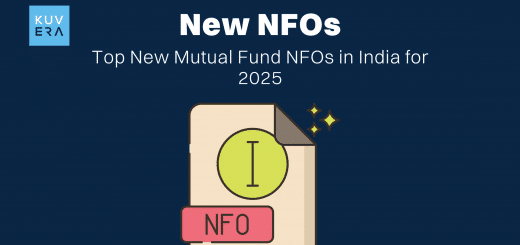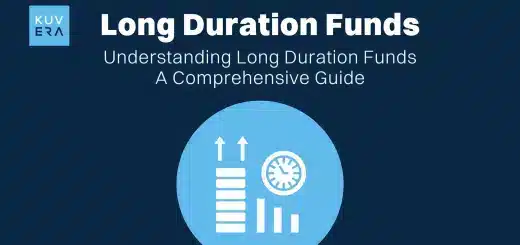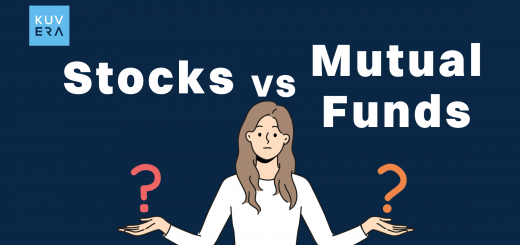The rise of passive investing in today’s market is because of their low-cost returns. Such returns mirror benchmark indices. Passive ETFs and index funds often outperform the majority of active fund managers (as per the SPIVA India Scorecard). This makes them a low-effort way to invest.
The low fees, transparency, tax efficiency and buy-and-hold nature of passive funds work well with the financial goals of long-term investors.
Set your financial goals now.
Warren Buffet On Index Funds
There is a high possibility that you may have heard about the legendary investor Warren Buffett even if you are not an active stock investor or someone who follows the market. After all, 93-year-old Buffett has somewhat of a cult following, inspiring thousands, if not millions, of investors across the globe. Notwithstanding his success in identifying wealth-creating stocks early on, Buffett is also a great advocate of passive investing.
“By periodically investing in an index fund, for example, the know-nothing investor can actually outperform most investment professionals,” he once said.
Passive investment? Index funds? Sounds like a language from Game of Thrones that you don’t understand? Worry not. Let’s break it down.
Difference Between Passive And Active Investing
Investments are broadly categorised into two categories; active and passive. Active investors, like mutual fund managers, go through heaps of excel sheets and financial data of companies to find stocks that are currently cheaper but have the potential to give massive returns in the future. They aim to generate higher and benchmark-beating returns for investors. Passive investment, on the other hand, simply copies a particular index, say India’s benchmark index Nifty 50. Here, the fund managers buy companies that are part of a particular index. Passive funds are also low-cost compared to active funds, where management fees are charged, which in turn could lower returns for the investors.
Best part? Passive investment is almost like DIY (do-it-yourself).
Start investing in Index Funds.
The Rise Of Passive Investing And Its Advantages
When the COVID pandemic forced people to sit at home, many started investing in markets. The bounce-back of the market from the COVID-19 lows made headlines, with stock tips even discussed on popular social media platforms like Instagram and Facebook. After dabbling with stocks here and there and making quick bucks, most novice investors realised that it was not their cup of tea. They instead stuck with mutual funds.
In the financial year 2019-20, investment in mutual funds through the popular SIP route stood at a little over ₹1 lakh crore. This has now almost doubled to ₹2 lakh crore. There are about 8.7 crore SIP accounts. Familiarity with the stock market during the pandemic made investors take note of the several advantages of passive funds. Passive funds are broadly of two types: index funds and exchange-traded funds. Simply put, these funds follow a particular index.
1/ Diversification: Passive funds follow a particular index, which is made up of different stocks. By investing in these funds, investors get exposure to the top 50 companies in India spanning various sectors such as banking, infrastructure, and automobile, fast-moving consumer goods, etc. Usually, top-quality companies and sector leaders are part of the index. Diversification is an essential risk-mitigating strategy.
2/ Steady returns: Since passive funds are all about following the index, the returns are more consistent with the broader market. Compared to actively managed funds, they may not generate higher returns, especially during bull markets. But on the market downside, they don’t underperform benchmarks as much. According to a widely tracked S&P Indices Versus Active Funds (SPIVA) report, the S&P BSE 100 gained 23.2% in 2023, and 51.6% of active managers underperformed the benchmark over that period.
3/ Low cost: Since fund managers don’t have to wear the research hat for stock selection, passive funds have a very low expense ratio and management fees. This helps ensure that investors don’t have to pay higher fees and keep intact the returns made by the scheme.
Here the average AUM under index funds over the last 12 months:
| AUM of index funds over past one year | |
| Average Net AUM for the month (in Rs crore) | |
| May-24 | 226,493.69 |
| Apr-24 | 218,151.16 |
| Mar-24 | 211,999.72 |
| Feb-24 | 207,616.60 |
| Jan-24 | 201,318.71 |
| Dec-23 | 197,035.78 |
| Nov-23 | 188,343.82 |
| Oct-23 | 184,429.81 |
| Sep-23 | 183,557.65 |
| Aug-23 | 179,561.68 |
| Jul-23 | 177,597.25 |
| Jun-23 | 175,540.56 |
Using Tech Innovations To Start Passive Investing
Mobile phones now enable millions of customers to easily start their investment journey without the need for a single paper. Right from filling out the form, submitting digital signatures, opening a demat account, and starting monthly SIPs, everything can be done on your mobile phone.
Don’t believe it? See how easy it is to start SIP.
Key details like expense ratio, fund performance, etc., are available for investors to read before investing. Even an average investor who may not have the acumen to understand or even have time to learn financial jargon and market trends can start SIPs. And since passive funds are the easiest to understand, they have been actively advertised among friend circles.
Is Passive Investing Safe?
Understanding the rising awareness and interest of investors in stocks and mutual funds, the market regulator Securities and Exchange Board of India (SEBI) is constantly interacting with market participants, particularly on the topic of investor protection.
Here are top 10 index funds based on five-year returns as of 13 June 2024:
| Top 10 index funds based on five-year return | |||||
| Scheme Name | AUM (Rs Cr) | 5Y | 3Y | 2Y | 1Y |
| UTI Nifty Next 50 Index Fund – Direct Plan – Growth | 3,833.32 | 21% | 23% | 35% | 69% |
| DSP Nifty Next 50 Index Fund – Direct – Growth | 520.02 | 21% | 23% | 35% | 69% |
| LIC MF Nifty Next 50 Index Fund – Direct Plan – Growth | 80.06 | 20% | 23% | 35% | 68% |
| ICICI Prudential Nifty Next 50 Index Fund – Direct Plan – Growth | 4,909.40 | 20% | 23% | 35% | 69% |
| Sundaram Nifty 100 Equal Weight Fund – Direct Plan – Growth | 76.32 | 19% | 20% | 30% | 50% |
| DSP Nifty 50 Equal Weight Index Fund – Direct Plan – Growth | 1,345.87 | 18% | 20% | 27% | 38% |
| Bandhan Nifty 50 Index Fund – Direct Plan – Growth | 1,219.39 | 15% | 16% | 21% | 27% |
| UTI Nifty 50 Index Fund – Direct Plan – Growth | 16,695.00 | 15% | 16% | 20% | 27% |
| ICICI Prudential Nifty 50 Index Fund – Direct Plan – Growth | 8,775.12 | 15% | 16% | 20% | 27% |
| Tata Nifty 50 Index Fund – Direct Plan | 700.96 | 15% | 16% | 20% | 27% |
FAQs about Passive Investing
What Is Passive Investing?
Passive investing is an investment strategy that involves buying a diversified portfolio that replicates the performance of a specific index, such as the Nifty 50, and holding it for the long term.
What Are The Main Benefits Of Passive Investing?
The main benefits include lower costs, diversification, and steady returns that are consistent with the broader market.
How Do Passive Funds Differ From Active Funds?
Active funds are managed by fund managers who actively select stocks to outperform a benchmark, while passive funds simply replicate the composition of an index.
Why Are Passive Funds Considered Low-Cost?
Passive funds have lower expense ratios and management fees because they do not require active stock selection and research.
How Has Technology Impacted Passive Investing?
Technology has made it easier for investors to start their investment journey online, with platforms offering detailed information and streamlined processes for investing in passive funds.
What Types Of Passive Funds Are Available?
The two main types of passive funds are index funds and exchange-traded funds (ETFs).
How Does Diversification In Passive Funds Mitigate Risk?
By following a broad index, passive funds invest in a variety of stocks across different sectors, reducing the impact of poor performance by any single stock.
Are Passive Funds Suitable For All Investors?
Yes, passive funds are suitable for both novice and experienced investors looking for a low-cost, long-term investment strategy.
What Role Do Regulators Play In Passive Investing?
Regulators like the Securities and Exchange Board of India work to protect investors by interacting with market participants and ensuring transparent and fair practices.
How Do Passive Funds Perform During Market Fluctuations?
Passive funds typically perform in line with the overall market. They may not outperform during bull markets but tend to offer more stability during market downturns.
Interested in how we think about the markets?
Read more: Zen And The Art Of Investing
Watch here: Goal Planning and Glide Path
Start investing through a platform that brings goal planning and investing to your fingertips. Visit kuvera.in to discover Direct Plans and Fixed Deposits and start investing today.












